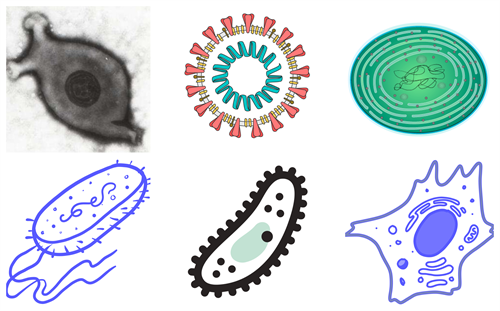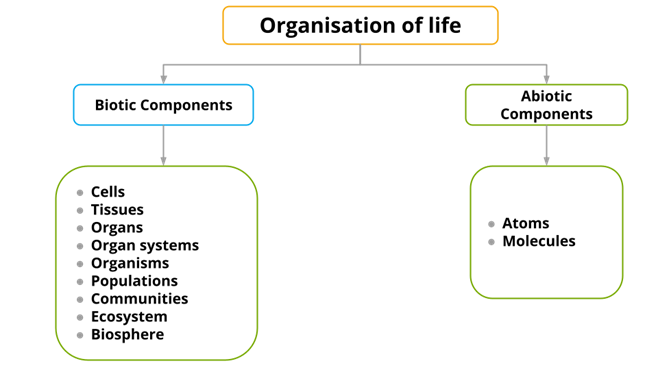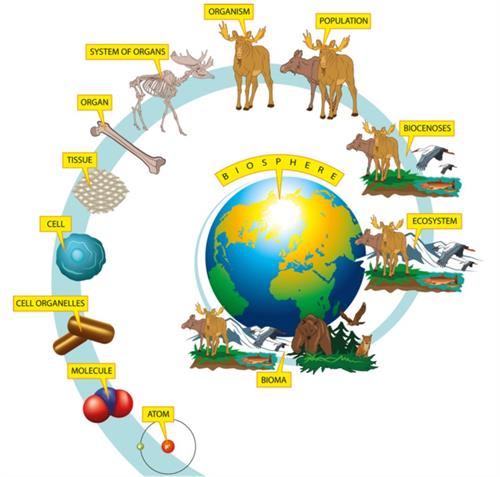
PUMPA - SMART LEARNING
எங்கள் ஆசிரியர்களுடன் 1-ஆன்-1 ஆலோசனை நேரத்தைப் பெறுங்கள். டாப்பர் ஆவதற்கு நாங்கள் பயிற்சி அளிப்போம்
Book Free DemoWhat is organisation of life?
A few organisms are listed in the image below, and they are mostly arranged in a specific order.

From top right: Mycoplasma, Virus, Cyanobacteria, Bacteria, Paramecium, Amoeba
Before we start to learn about this, we arrange the following organisms into the order the following organisms based on their size;
Paramecium, Cyanobacteria, Mycoplasma, Amoeba, Bacteria, Virus
If we reorder based on their size, it will be looks like this below;
Mycoplasma, Virus, Cyanobacteria, Bacteria, Paramecium, Amoeba
Now, why should we learn about arrangements? Let's look here for more explanation about it.
The arranging of organisms in the levels based on their size, shape, and complexity of their cells and tissues is known as the organization of life.
Now, let's dive into the chapter. The organisms arrangement will start from a microscopic abiotic substance called atoms and ends with the biosphere — most extensive level.

Organisation of life flowchart
The organisation of life begins at the atomic stage, which is submicroscopic. As these atoms come together, molecules are formed. Furthermore, these molecules chemically react to form cell organelles, which are microscopic or macroscopic structures. These organelles are found in cells and are used to carry out life processes in organisms. Finally, there is the biosphere, which is the largest system comprised of all of these.

Organisation of life
In this chapter, we are not learning about the abiotic substances called atom and molecules, but mainly about the biotic substances, like from cells to organisms.